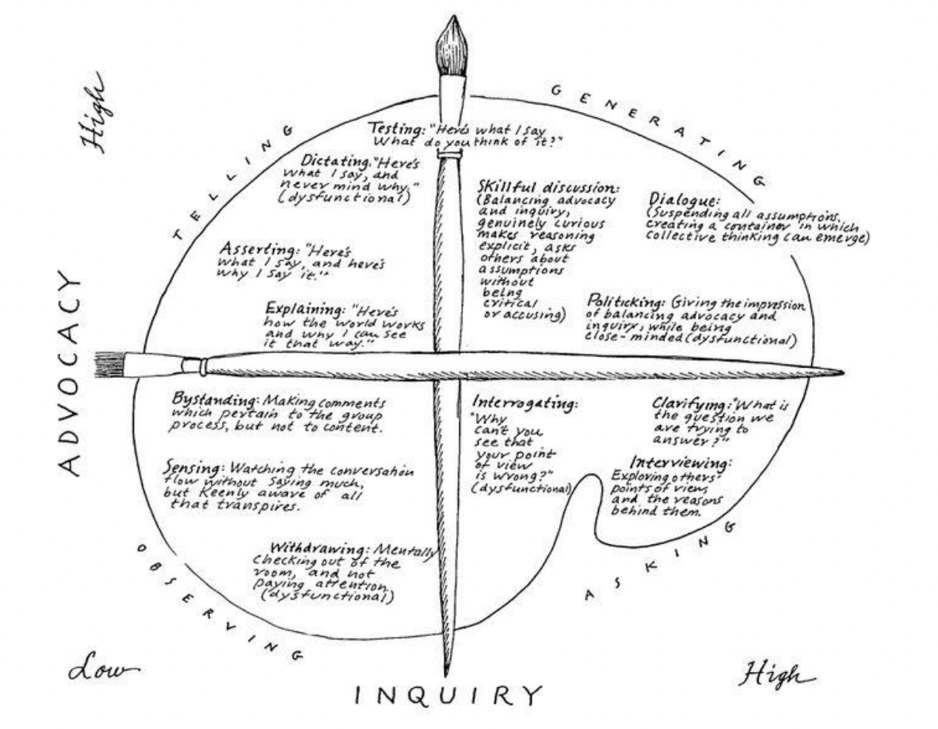
Written by Marnie Brokenshire
August 20, 2022
Surveys are the tool organisations use to “measure culture” and provide insights to shape, tailor and improve the environment and the way work gets done, but they don’t work in isolation and here’s 7 reasons why:
-
Trust – if your culture already has trust issues, or a lack of confidence in the leadership, then you are unlikely to be told the truth (read our article about trust & confidence here);
-
Confidence – there needs to be a real belief that if I’m going to the trouble of telling you what needs to be done differently, you are going to listen and do something about it;
-
Confidentiality – despite the great lengths to which we go to assure everyone we won’t know who said what, many just don’t believe it;
-
Fatigue – over surveyed environments are just sick of telling you and they will either not bother, or skew the answers to “make it go away”;
-
Demographics – not one size fits all and many misinterpret the question, or contextualise it in a way that is not intended by the author of the questions;
-
Right Issues – it is almost impossible (without creating a survey of 1000’s of questions) to truly get to the heart of the culture hits and misses; and
-
Data – is essential, but this is data source that is too easily manipulated and unreliable, and, given the rate of workplace change, one set of data points represented by one demographic in one survey period may not be the relevant reference point by the time the same group is surveyed again, so can be statistically misleading.
Take this example…
A survey conducted of a large call centre identified that the call centre staff were, on the whole, very happy. They loved the company, the job and the leadership. In the typical post survey “workshops” conducted by HR where everyone is bought in to discuss the results, the team nodded and smiled and had no further input on improvements, other than “more training”. They were congratulated and sent back to work. There was the obligatory back slapping for the managers who were heralded as exemplary examples, and the HR team moved on – nothing to be done here.
But the real story was very different. A few months later, certain things occurred which brought to light that there was systematic bullying from one manager (who had stood over people whilst they completed the survey), the call centre system was being misused due to poor training resulting in complex billing issues, and the undercurrent was a toxic blame culture with constant team infighting and savage competitiveness in an effort to outdo each other as a form of defence strategy to survive the culture. The culture survey and the workshop were entirely ineffective.
“Don’t use culture surveys if you really
want to know what’s going on beneath the surface”
I started working in the era before fancy software programs were used to hear from the workforce. Those of my vintage will recall the old “suggestion box”. Under lock and key people would scratch on a piece of paper all sorts of ideas and thoughts (including rude or offensive although these were equally insightful). This old fashioned (eek, non-digital) approach provided way more insight than I’ve ever had from the new fandangle software programs for a number of reasons. It wasn’t forced, it wasn’t restricted to highly orchestrated questions, it wasn’t event based, there were no participation targets, it was organic and in my opinion, just better intel. It provided great insight into what was really going on beneath the surface because people weren’t forced to contribute.
Having said all that, surveys do have a place. They can be a good way to get a benchmark of where to start as long as you deep dive after the survey. When used to measure specific initiatives rather than culture as a whole (pulse surveys) useful data at a micro level can be obtained as long as it’s used in context and not taken as gospel.
Use sparingly and as a benchmark if you must, but preferably, use them for specific topics and more immediate feedback on a specific topic, but don’t use them to fully inform your people strategy in lieu of any other data or intel and try to make them less scripted. Otherwise, you will not address the core issues and your culture initiatives may fail.
What should be done instead?
1. Gap Analysis
Understanding the expectation and experiences of the people through a series of carefully constructed interviews and workshops, using diagonal slice, varied tenure and mixed functions, any standard gap analysis technique and data capture method. If facilitated well, you will identify the gaps and any underlying issues that may be impacting the employee experience. The power of conversation cannot be underestimated, neither can the power of a cleverly facilitated session where a trained facilitator will be able to see and read the undercurrent and dive deeper. With this approach, you incorporate a collaborative and consultative approach to working with the people to identify gaps. In the facilitation process, Peter Senge’s inquiry/advocacy model is useful.

2. Build Trust
Everything, and I mean everything, begins with trust. There should be purposeful intent – initiatives that support building trust and confidence.If you centre your people strategy around nothing other than creating an environment where people are given multiple avenues to discuss issues without consequence, where leadership is held to account for behaviour as much as results, where you actually listen and implement change (demonstrated action), and where you measure your culture’s transparency and openness, you will eradicate an undercurrent and stop toxicity bubbling under the surface. Of course in all of this, you need to teach your leaders the “how to”. Once they have the skill, it will be more likely it is used. Read our article here.
3. Measure Leadership Effectiveness Separately
Driving engagement in building culture cannot be done without your leaders on board. If you want to find out exactly what is going on, you need to separate obtaining feedback on culture and environment from measuring leadership effectiveness. The latter needs to be a purposeful, strategic process aligned with your leadership development program. Separating the two will avoid any perceived or real risk of conflict or manipulation.
These insights are mine derived from years of experience, but I also recommend The Corporate Culture Survival by Edgar Schein (1999). Some of the theories advanced in this book set me off on the path of not relying on culture surveys.
Reach out if you want to go beyond a survey approach and implement more effective methods for assessing culture and leadership effectiveness.
As practitioners with years of in-house Corporate experience, we know the role of HR is hard, we also know that becoming strategic, influential and value add is a journey supported by mentoring. This is why we offer people strategy workshops and HR masterclasses facilitated by Marnie Brokenshire (30+ years corporate HR, 15 at C-Suite), and Nicole Mathers (10+ years corporate HR, 5 at senior management). Reach out to see how we can support you.
Related Articles
Why you should be doing stay interviews.
We are noisy about the use of culture surveys - we think they rarely tell you what you really need to know and should be used sparingly - read here....
Why are we still dealing with bullying, harassment & discrimination?
Statistically, bullying and harassment in the workplace is as bad as ever. Despite the #metoomovement, the events of parliament and countless...
Are you still doing traditional performance reviews?
In 2015, PWC surveyed the ASX top 150 regarding performance reviews. The survey found that most high performing businesses acknowledged their...
Subscribe
Follow Us
We welcome a discussion to see if we can meet your needs.






0 Comments